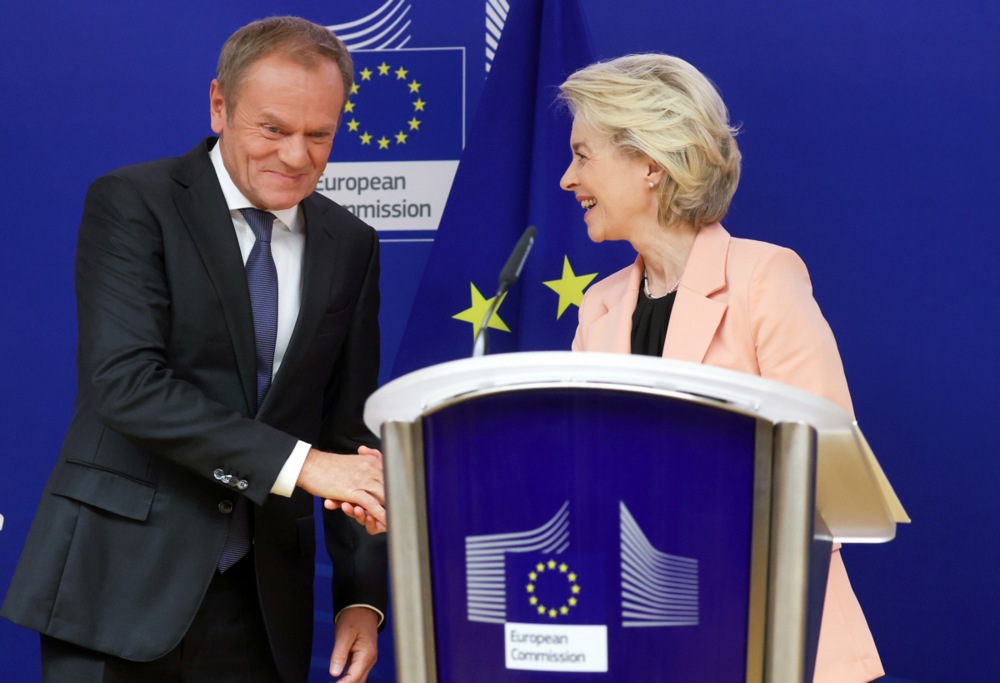Our specialist writer today is Dr Robert Brüll, CEO of FibreCoat, a German company which develops advanced metals technology used in space, defence and other industries. The company supplies to NATO and allied forces in Europe.
Germany is rearming at a speed unheard of since the 1950s. Russia’s invasion of Ukraine and Donald Trump’s repeated warnings that the US may no longer underwrite Europe’s security have forced Berlin to face up to a truth it has avoided for generations, and pay back its peace dividend. Europe must be able to defend itself. For the first time since the war, Germany is treating defence as a serious national duty.
It’s a dramatic change. Berlin has rewritten its budget rules so that defence spending can be financed outside the usual debt brake. In practice, this means the creation of a structural exemption that allows the government to borrow for defence even when other forms of borrowing are capped. The government effectively has unlimited borrowing power to rebuild the military. Now, defence spending is on course to reach 3.5 per cent of GDP by 2029 – a level that would have been politically inconceivable just a few years ago.
What’s on the shopping list? Heavy armour, long-range artillery, F-35s, layered air defence systems from Skyranger to Patriot, fleets of reconnaissance and attack drones, Shahed-type loitering munitions, new ships, vast quantities of ammunition … And the list goes on. No surprise that German prime contractors such as Rheinmetall are booming. After decades of underinvestment, the defence industrial base is finally being fed.
This is to the good. Indeed, it’s necessary. In fact, it’s overdue. And yet, after 20 years working at the frontier of advanced materials for defence and – a sector that increasingly overlaps with it – space, I am concerned that Germany is approaching rearmament in a fundamentally reactive key. We are not preparing to fight and win the next war. Rather, our posture stems from a fear of being caught out, which makes it a posture of risk mitigation and insurance, not one of risk-taking, forward thinking, and effective military strategy. When you insure against everything that hurt back in 2022, or even 2024, you are already behind. Real deterrence means taking the initiative. It means taking gambles.
The United States, China and Russia are buying and building at the same time. But they are also betting (and betting big) on the technology that could define the next decade of conflict. Hypersonics, autonomous swarms, counter-space systems, quantum sensors, new stealth materials. They want to shape the future of war, where we’re aiming to avoid past mistakes.
There is perhaps no technology that provides a more illuminating case study here than the drone. The Bundeswehr plans to acquire new combat and reconnaissance systems at pace. That’s good. Yet it shows no comparable interest in pursuing counter-drone innovation. This is a striking omission: If we don’t have the technology to defeat hostile drones, which grow ever cheaper, ever faster, and ever more disposable, then we will be tactically naked. Ukraine has proved that the side with better counter-drone systems does not just win battles; it preserves soldiers, armour, and ammunition. But Germany’s error is in fact wider: It is betting on a single solution instead of taking a broad approach, where failure and quick learning is valued over brand. Germany should acquire several systems, test them and then double down on the best ones. A variety of interoperable drones will be stronger than a single source.
We could also look to orbit. Every serious military thinker accepts that space is now a decisive warfighting domain. Satellites guide our weapons systems, control our communications, track borders, monitor hostile forces, and allow our economies to function. Orbital control is as strategically important as the North Atlantic once was. Yet European spending on space defence, and indeed its whole approach to space, is woefully inadequate. The US, China and Russia are racing ahead in this crucial domain. Europe is essentially a bystander. Space power is becoming as decisive as naval power became in the 15th century.
Why, then, are we hesitating? Because we’re yet to unlearn some bad cultural habits. Germany still treats defence as a system of patronage: A sort of protective shell for big national companies. Procurement processes benefit incumbents rather than support innovation or seek out the best possible option. New entrants, even those with the kinds of breakthrough technologies that would be championed by the US’s Defense Advanced Research Projects Agency (DARPA), face endless delays and unclear paths into the defence market. Yes, Germany has changed its budget. But it hasn’t changed its mindset, not yet.
There are structural problems, too. Europe suffers from extreme fragmentation that in practice means about 27 variants of everything. Fighter jets, infantry vehicles, radios, missile systems – each country has its own particular flavour. The upshot is that there are no economies of scale, production is slow, and delays are chronic. Given that modern defence tech is no longer isolated to defence – given that batteries, composites, hypersonics, advanced manufacturing and rare-earth substitutes are ‘dual-use’ – this goes well beyond military matters. Civilian infrastructure runs on the same technology. Berlin hopes that its defence spending will improve its sovereign industrial capacity and chip away at China’s grip on critical materials.
But that won’t happen by itself. War could be on our doorstep in 2029: Without real pace, without a willingness to challenge legacy structures, without a willingness to tear down old obstacles to real progress, the familiar bottlenecks will simply reappear. And then Europe will buy more of what already exists, rather than help to build what must exist. So though Germany’s rearmament does represent a historic break, and does deserve praise, we must go beyond where we are now and push not just for risk mitigation but for military innovation at speed. Because defence today isn’t about buying decent equipment, but creating the technology that will shape the future.
We must get ready for conflict. Sheer financial muscle and spending power must be joined to a new attitude: open procurement, rapid testing, faster adoption, genuine co-development. We must celebrate and reward new ideas rather than protect old structures. We need to invest not just in platforms, but in the underlying materials, software, and manufacturing technologies that will define the next era of deterrence. The risks we face as a continent are not abstract. They’re here, and we must act quickly.





The Greens are fading now, but I was in Germany with them at the start